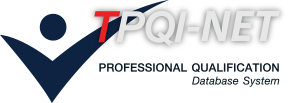หน่วยสมรรถนะ
Inspect and maintain structures and related components of non-pressurized small aircraft.
สาขาวิชาชีพการบิน
รายละเอียดหน่วยสมรรถนะ
| 1. รหัสหน่วยสมรรถนะ | AVT-FTN-3-031ZA |
| 2. ชื่อหน่วยสมรรถนะ | Inspect and maintain structures and related components of non-pressurized small aircraft. |
| 3. ทบทวนครั้งที่ | - / - |
| 4. สร้างใหม่ |
|
ปรับปรุง |
|
| 5. สำหรับชื่ออาชีพและรหัสอาชีพ (Occupational Classification) | |
|
|
|
| 6. คำอธิบายหน่วยสมรรถนะ (Description of Unit of Competency) | |
| This unit competition requires the application of procedures and techniques related to the inspection and maintenance of small structures unpressurized aircraft during scheduled or unscheduled maintenance, including required special inspections after events such as landings, an overload or a flight through heavy turbulence. The unit also includes performing a limited number of minor repairs metals and compounds minor classified as elementary maintenance. application procedures is also required and techniques associated with the removal and installation of structural and nonstructural components related, including elements such as internal adjustment, seats and emergency equipment. The work can be done individually or as part of a team. | |
| 7. สำหรับระดับคุณวุฒิ |
| 1 | 2 | 3 | 4 | 5 | 6 | 7 | 8 |
|---|---|---|---|---|---|---|---|
| 8. กลุ่มอาชีพ (Sector) | |
| 10 Aircraft Mechanics | |
| 9. ชื่ออาชีพและรหัสอาชีพอื่นที่หน่วยสมรรถนะนี้สามารถใช้ได้ (ถ้ามี) | |
| 101 Aircraft Maintenance: Airplane102 Aircraft Maintenance:Helicopter103 Aircraft Maintenance: Avionic | |
| 10. ข้อกำหนดหรือกฎระเบียบที่เกี่ยวข้อง (Licensing or Regulation Related) (ถ้ามี) | |
| ICAO Doc 7192 / EASA Part 66 | |
| 11. สมรรถนะย่อยและเกณฑ์การปฏิบัติงาน (Elements and Performance Criteria) |
| หน่วยสมรรถนะย่อย (EOC) | เกณฑ์ในการปฏิบัติงาน (Performance Criteria) | รหัส PC (ตามเล่มมาตรฐาน) |
รหัส PC (จากระบบ) |
|---|---|---|---|
| 101320.01 Inspect and maintain aircraft structure. | 101320.01.01 Aircraft structure visually or physically checked forsigns of defects of deformation or damage in accordance with maintenancedocumentation and procedures approved, while observing all requirements ofrelevant occupational health and safety (WHS), including the use of safety data sheets (MSDS) and items of personal protective equipment (PPE), and damage or defects are assessed against damage or wearlimits specified by structural repair manual or other approved data todetermine if repair or replacement is required. | 101320.01.01 | 71037 |
| 101320.01 Inspect and maintain aircraft structure. | 101320.01.02 Preventativemaintenance techniques are employed to preserve the integrity of aircraftstructure, and required maintenance documentation is completed and processedin accordance with standard enterprise procedures. | 101320.01.02 | 71038 |
| 101320.02 Prepare and Install components. | 101320.02.01 Structure is supported and prepared in accordance with theapplicable maintenance manual to ensure the safety of personnel and theabsence of damage to the aircraft or component during removal of components. | 101320.02.01 | 71039 |
| 101320.02 Prepare and Install components. | 101320.02.02 Component extractionis carried out in accordance with the maintenance manual applicable toobserve all relevant requirements of the WHS, including the use of MSDS andPPE items. | 101320.02.02 | 71040 |
| 101320.02 Prepare and Install components. | 101320.02.03 Support/safetyequipment is removed at an appropriate time to ensure personnel safety andfreedom from structural damage. | 101320.02.03 | 71041 |
| 12. ความรู้และทักษะก่อนหน้าที่จำเป็น (Pre-requisite Skill & Knowledge) | |
|
|
|
| 13. ทักษะและความรู้ที่ต้องการ (Required Skills and Knowledge) | |
|
(ก) ความต้องการด้านทักษะ
(ข) ความต้องการด้านความรู้
|
|
| 14. หลักฐานที่ต้องการ (Evidence Guide) | |
|
|
|
| 15. ขอบเขต (Range Statement) | |
|
|
|
| 16. หน่วยสมรรถนะร่วม (ถ้ามี) | |
| N/A | |
| 17. อุตสาหกรรมร่วม/กลุ่มอาชีพร่วม (ถ้ามี) | |
| N/A | |
| 18. รายละเอียดกระบวนการและวิธีการประเมิน (Assessment Description and Procedure) | |
|
• Assessors must satisfy National Vocational Education and Training Regulator. |
|
